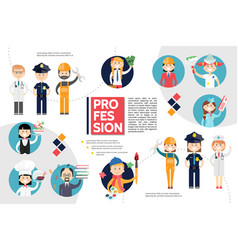Learn About The Ways In Which Seasonal Aspects Can Influence The Success Of Business External Paint And Establish The Most Effective Times To Accomplish Long Lasting Results For Your Job
Learn About The Ways In Which Seasonal Aspects Can Influence The Success Of Business External Paint And Establish The Most Effective Times To Accomplish Long Lasting Results For Your Job
Blog Article
Short Article Author-Korsholm Decker
When you're preparing a commercial external painting task, seasonal elements can make or break your results. You'll want to think about exactly how temperature level and humidity effect paint application and drying times. Selecting the ideal season can ensure your paint sticks effectively and lasts much longer. But which ceiling and walls painted same color are genuinely the very best for this type of work? Allow's check out the crucial elements that can influence your task's success.
The Impact of Temperature on Paint Application
When you're intending an industrial external paint job, the temperature level can considerably impact how well the paint adheres and dries.
Ideally, you wish to repaint when temperature levels range in between 50 ° F and 85 ° F. If it's too cool, the paint may not treat effectively, leading to problems like peeling off or cracking.
On the other side, if it's too warm, the paint can dry out too rapidly, protecting against appropriate attachment and leading to an unequal finish.
You ought to likewise think about the time of day; morning or late afternoon offers cooler temperature levels, which can be much more beneficial.
Always inspect the supplier's recommendations for the certain paint you're using, as they frequently offer advice on the perfect temperature range for optimum results.
Humidity and Its Effect on Drying Times
Temperature isn't the only ecological variable that affects your commercial external paint job; humidity plays a significant function as well. High humidity degrees can reduce drying times significantly, influencing the general high quality of your paint work.
When the air is filled with dampness, the paint takes longer to cure, which can result in concerns like poor bond and a greater risk of mold growth. If you're painting on a particularly moist day, be planned for extended wait times in between layers.
It's important to monitor neighborhood climate condition and strategy accordingly. Preferably, go for moisture degrees in between 40% and 70% for ideal drying out.
Maintaining these factors in mind guarantees your job remains on track and provides a long-term finish.
Best Seasons for Commercial Outside Painting Projects
What's the very best time of year for your industrial outside painting jobs?
Springtime and very early autumn are commonly your best choices. During these seasons, temperature levels are moderate, and humidity degrees are usually reduced, producing ideal problems for paint application and drying.
Stay home exterior paint solutions fort worth tx of summer season's intense heat, which can create paint to completely dry as well swiftly, resulting in inadequate adhesion and finish. Similarly, wintertime's cool temperature levels can hinder proper drying and treating, running the risk of the longevity of your paint job.
Aim for days with temperature levels in between 50 ° F and 85 ° F for optimum results. Bear in mind to check the local weather forecast for rainfall, as wet problems can wreck your job.
Planning around just click the following webpage guarantees your paint job runs efficiently and lasts longer.
Verdict
Finally, planning your business external paint tasks around seasonal considerations can make a significant difference in the end result. By scheduling job during the suitable temperature levels and moisture degrees, you'll guarantee better adhesion and drying times. Remember to keep an eye on local weather prediction and select the right time of year-- springtime and early autumn are your best options. Taking these actions will certainly assist you achieve a long lasting and specialist coating that lasts.
